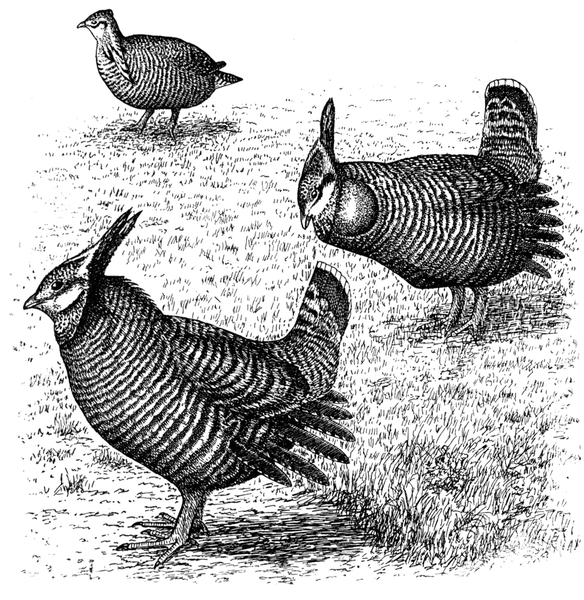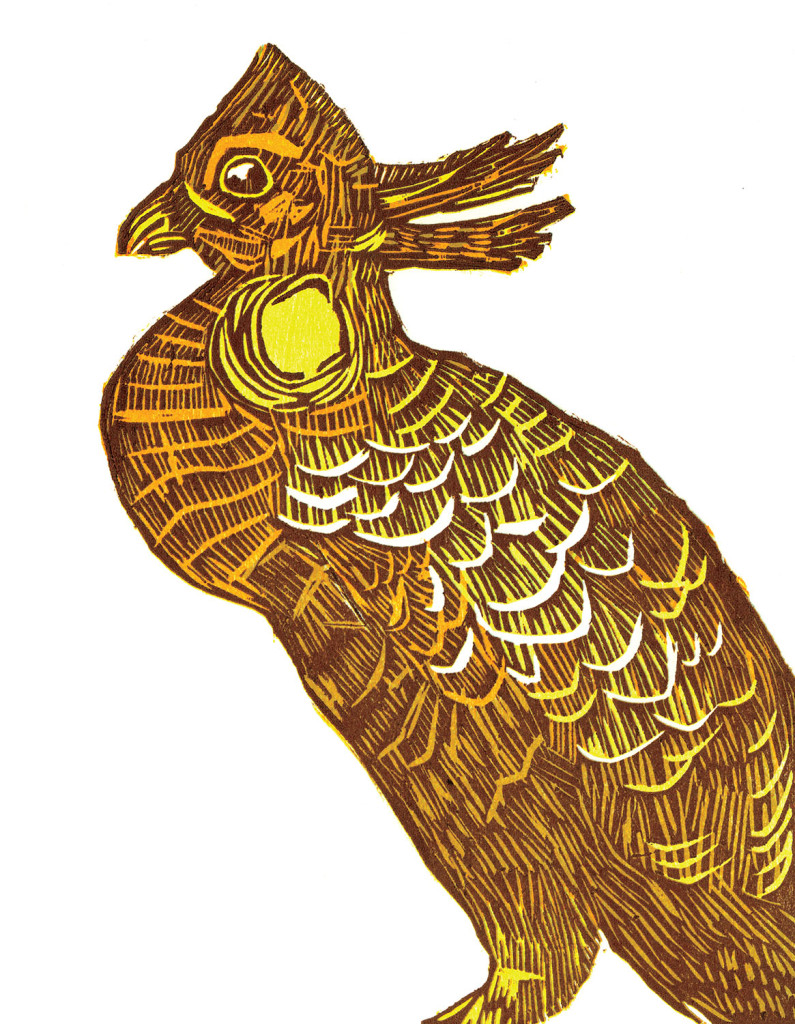The Heath Hen is one of the American birds on the list of extinct birds that helped build awareness about the existence of the phenomenon of extinction. It was a distinct subspecies of the Greater Prairie Chicken native to the East Coast, from New Hampshire down to Virginia. As a member of the grouse family, it was extremely common in colonial times, but was hunted extensively for food, and gained a reputation as a tasty poor man’s bird, due to its abundance.

male and female, via wikipedia.
The average hen weighed about two pounds and stood 17 inches tall. Since they were hunted so extensively after the Europeans arrived, the heath hen died out on mainland America by the second half of the nineteenth century. The last home of the Heath Hen was on Martha’s Vineyard, where there were 300 birds left, which declined rapidly by the end of the century to about 70 birds.
These remaining birds gained legal protection under a hunting ban and earned a “Heath Hen Reserve” on the island in 1908, which helped their population rebound to about 2000 birds. Visitors to the Heath Hen Reserve could watch the famous mating rituals of the Heath Hen, which involved elaborate dance moves, called “booming” by the male members of the flock, engineered to impress the ladies. The males inflated the orange sacks on their necks, and made a mournful echoing sound, like a deep hooting moan. (You can hear a recording of their cousin the Greater Prairie Chicken doing this here.) With tail and neck feathers erect, they would strut about trying to impress the hens, who sat quietly watching.

Males displaying in foreground, female in background. via Wikipedia.
However, once a population of birds is limited to an island it becomes more vulnerable to bad luck and circumstance. In the Heath Hen’s case, the flock suffered a destructive fire during the 1916 nesting season, severe winters, an unusual influx of predatory hawks, inbreeding, an excess number of male individuals and possibly an epidemic which might have been started by poultry, all of which brought the numbers down again. By 1927 only twelve birds were left, and only 2 of them were female, despite great efforts made by conservationists. In 1928 the flock was reduced to one male bird, which was nicknamed “Booming Ben”, who actually continued to boom even after any potential audience for his display had long since disappeared. He was last seen in March of 1932.
Although the effort to save the heath hen from extinction was ultimately unsuccessful, it paved the way for conservation of other species. Ornithologists made many mistakes in the process of trying to save the Heath Hen, and in doing so learned much about the challenges of protecting small populations. Some of this knowledge is being put to use in the conservation of the hen’s cousin, the Greater Prairie Chicken, which at one time flourished in the prairies of the middle of the country, from Texas, north to Indiana and the Dakotas. They are now extremely rare in much of their former range due to habitat loss.

